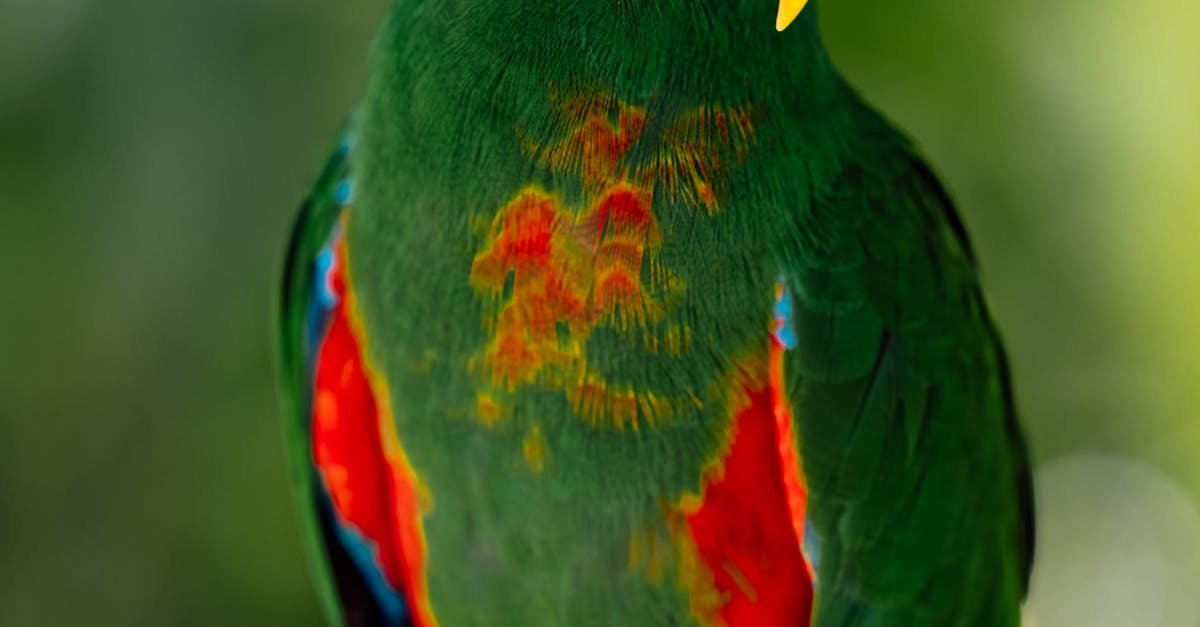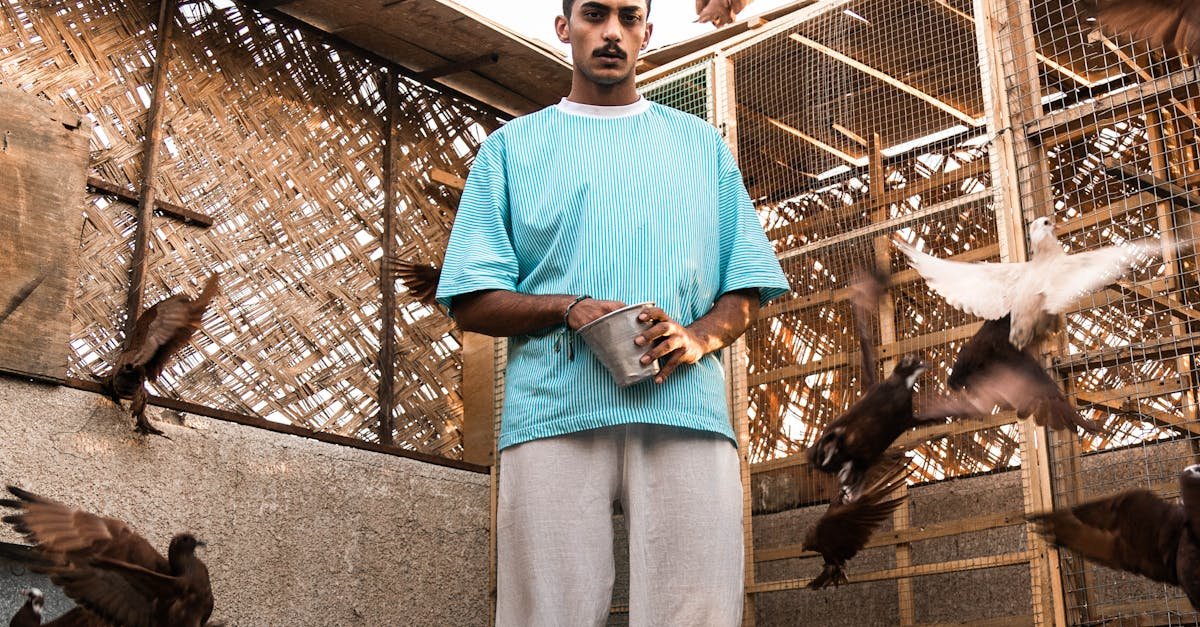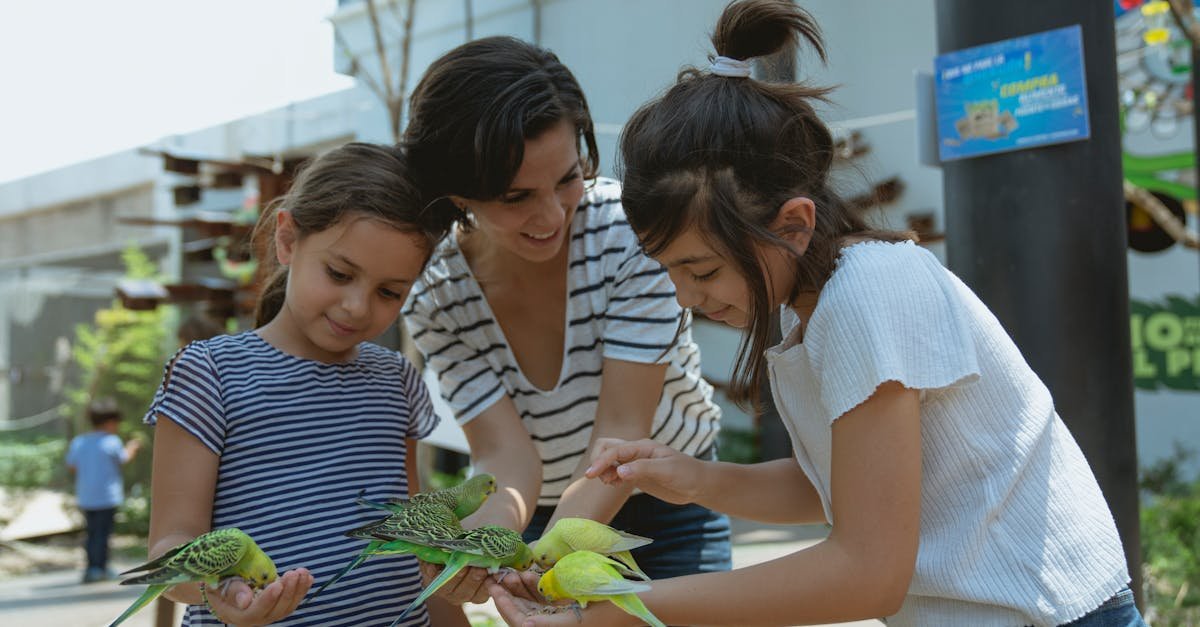Cleanliness in Wild vs. Domestic Birds
Birds exhibit varying degrees of cleanliness based on their environment and lifestyle. Wild birds often engage in natural behaviors that promote their hygiene, such as dust bathing and preening. These activities help them maintain their feathers, removing parasites and dirt. The necessity of looking their best in the wild can stem from survival instincts, as a healthy appearance may attract mates or indicate strength to rivals.
In contrast, domestic birds may not have the same impetus for cleanliness. They live in controlled environments where human intervention plays a significant role in their care. As a result, their grooming habits can differ quite a bit. While many domestic birds still preen regularly, their access to natural resources like dust baths is often limited. This can lead to a reliance on human-provided baths or cleaning solutions, which may not replicate the instincts found in their wild counterparts.
Here is a great resource for anyone looking to expand on this topic.
Differences in Grooming Habits
Birds exhibit a variety of grooming behaviors that reflect their species and environment. Many species, such as parrots and cockatoos, demonstrate a more intensive grooming routine that includes preening feathers with their beaks. Preening helps to maintain feather condition and is essential for insulation and waterproofing. Other birds, like finches, may spend less time grooming but still engage in regular maintenance, often using environmental objects to assist in the process.
Social interactions also play a role in grooming habits among birds. Some species, including the African grey parrot, engage in mutual preening, which fosters social bonds and helps maintain feather integrity. In contrast, solitary bird species might rely solely on their individual grooming techniques. This variance highlights how social structures and environmental interactions influence the grooming behaviors adopted by different bird species.
Environmental Factors Influencing Bird Hygiene
The environment plays a crucial role in determining the hygiene of various bird species. Birds living in urban areas may face challenges such as pollution, which can affect their ability to maintain clean feathers. In contrast, those inhabiting pristine natural habitats often benefit from cleaner surroundings, allowing for more effective grooming and a lower risk of parasites or contaminants.
Weather patterns also contribute significantly to a bird’s hygiene. For instance, frequent rain can provide opportunities for birds to bathe, helping them remove dirt and parasites. Conversely, in arid regions where water sources are scarce, birds may struggle to keep their plumage clean. These environmental elements shape the grooming habits and overall cleanliness of different bird populations.
Habitat and Its Impact on Cleanliness
Birds adapt their grooming habits to their environments, which significantly influences their cleanliness. In lush forests, for instance, foliage provides natural elements for dust bathing and preening. These habitats often feature a diversity of natural materials that birds can use to maintain their feathers. Conversely, urban settings may limit access to suitable grooming spaces, posing challenges for cleanliness as birds resort to alternative means for feather care.
Wetland environments offer unique conditions that can either promote or hinder cleanliness among various species. The presence of water can facilitate bathing and keep feathers free of dirt and parasites. However, pollutants and debris in these habitats may compromise feather quality if birds can’t effectively clean themselves. Therefore, the specific conditions of a bird’s habitat directly correlate to its overall hygiene and ability to maintain optimal feather condition.
The Impact of Diet on Bird Hygiene
Diet plays a crucial role in maintaining feather health and overall cleanliness in birds. Nutrient-rich foods provide the essential vitamins and minerals necessary for optimal feather quality. Deficiencies in dietary components can lead to dull or damaged plumage, making birds more susceptible to parasites and dirt accumulation. For instance, a lack of fatty acids may result in dry and brittle feathers that do not repel water effectively.
Additionally, certain foods can promote better grooming behaviors in birds. Seeds rich in oils, such as flaxseed or sunflower seeds, can contribute to a healthier feather texture. These foods may encourage birds to engage in more frequent preening, which is vital for removing dirt and promoting a well-groomed appearance. Access to a varied diet is essential, ensuring that birds receive a balanced intake that supports their natural hygiene practices.
Foods That Promote Feather Health
A balanced diet plays a crucial role in promoting feather health among birds. Foods rich in essential fatty acids, such as seeds from flax, hemp, and chia, contribute to maintaining the integrity of feathers. These nutrients help to keep feathers supple and moisturized, which can reduce breakage and enhance overall plumage appearance. Additionally, leafy greens packed with vitamins A and K are vital for skin health. These vitamins support the growth of healthy feathers and assist in the molting process.
Protein is another key component of a feather-healthy diet. High-quality sources, such as boiled eggs, legumes, and certain insects, provide the amino acids necessary for feather production. A diet lacking in protein can lead to poor feather quality and increased molting stress. Furthermore, fruits rich in antioxidants, like berries and citrus, help to combat oxidative stress and support the immune system, contributing to a bird’s overall well-being and feather vitality.
FAQS
Which bird is considered the cleanest?
The cleanest bird is often considered to be the African Grey Parrot due to its meticulous grooming habits and high levels of intelligence, which enables it to engage in regular cleaning behaviors.
How do wild birds maintain their cleanliness?
Wild birds maintain their cleanliness through various grooming behaviors, such as preening their feathers with their beaks, bathing in water, and using dust baths to remove parasites and dirt.
Are domestic birds cleaner than wild birds?
Domestic birds can be cleaner than wild birds due to their controlled environments and access to regular baths; however, their cleanliness largely depends on the care and attention they receive from their owners.
What environmental factors affect a bird’s hygiene?
Environmental factors such as habitat cleanliness, availability of bathing spots, and exposure to pollutants can significantly influence a bird’s hygiene and overall health.
How does diet impact a bird’s feather health?
A bird’s diet plays a crucial role in its feather health; foods rich in vitamins, minerals, and fatty acids can promote vibrant, healthy feathers, while a poor diet may lead to dullness and increased feather loss.
Related Links
Top Bird Species for Pet Owners
What is the best bird to own as a pet?
What is the most high maintenance bird?
What is the most cuddly pet bird?
What pet bird is low maintenance?
Which is the friendliest bird?
What birds bond best with humans?
What is the best beginner bird to talk?
What is the least aggressive pet bird?
What pet bird has the most personality?

My name is Shane Warren, the author behind Chirping Birds Hub – your ultimate guide to the wonderful world of birds! Unleash your inner avian explorer as we delve into a vibrant library of knowledge dedicated to all things feathered. From learning about diverse bird species from across the globe to understanding their captivating habitats and behaviors, I’m here to fuel your passion for these magnificent creatures. Not only that, but I also provide valuable insights on being a responsible and informed pet bird owner. Join our vibrant community and let’s celebrate the feathered wonders of the world together – one chirp at a time.


